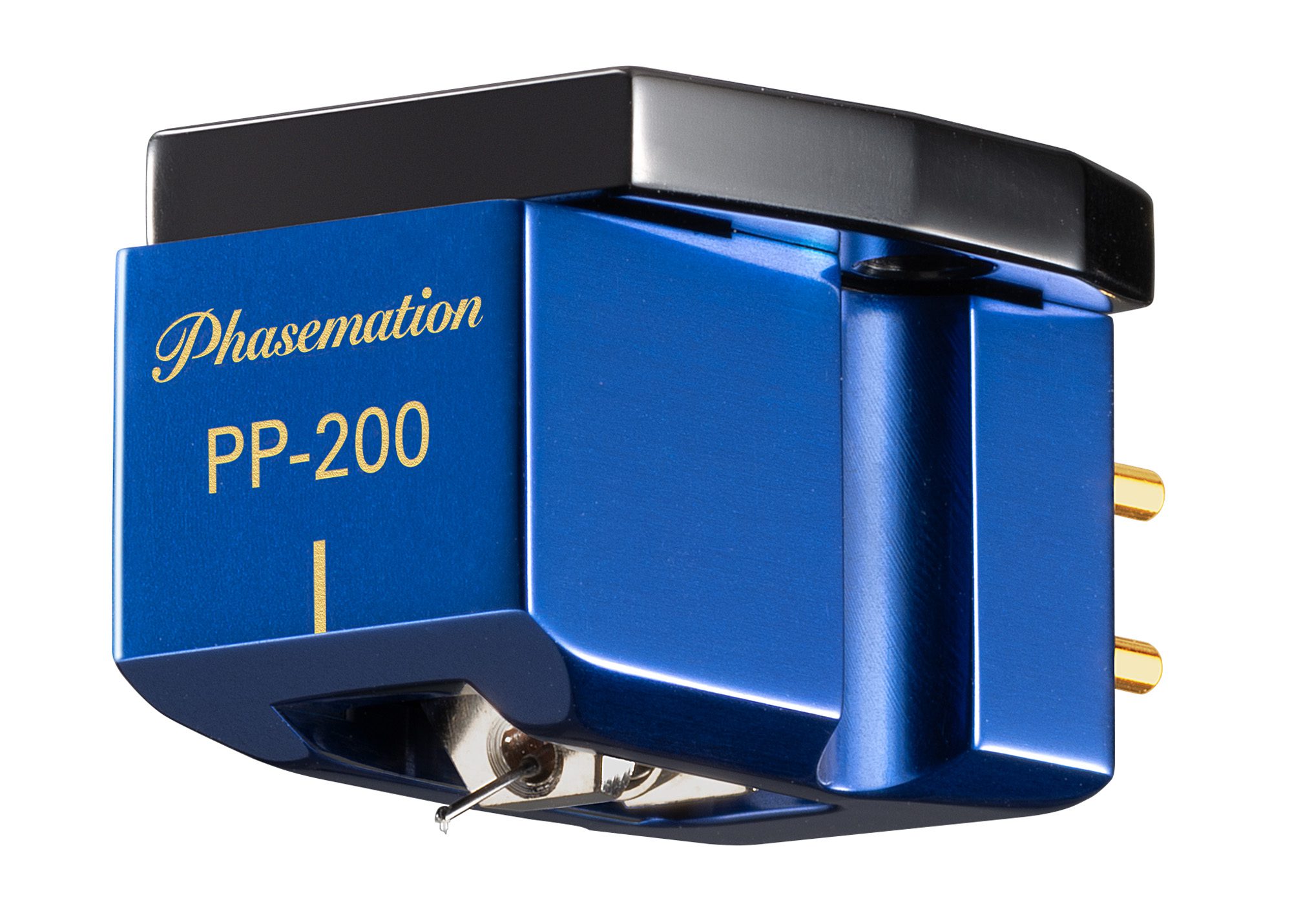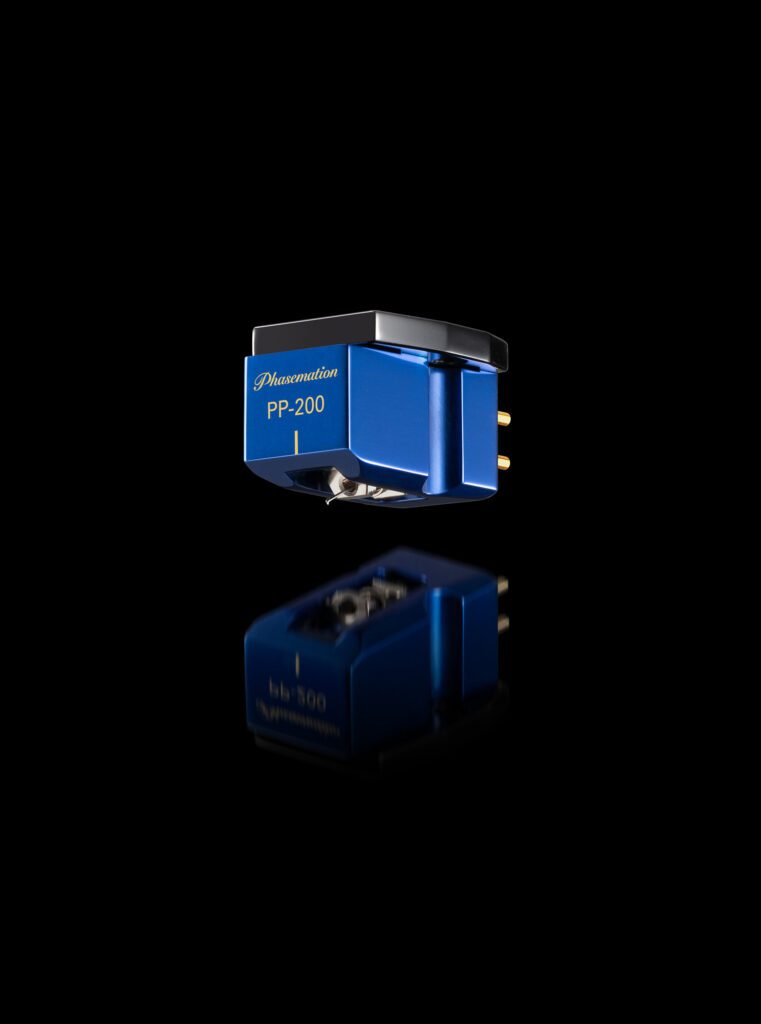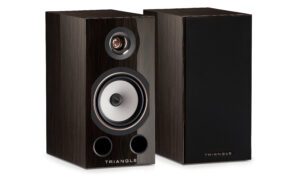
What is it with the Japanese and moving coil cartridges? There seem to be many companies in that part of the world that make this most precise of hi-fi components, certainly more per capita than anywhere else. I guess the reputation for attention to detail must be accurate as it would be very difficult to make cartridges if you hadn’t mastered this side of the equation. Then there’s the fact that a brand like Phasemation, whose history goes back to 1970, is virtually unknown on this side of the globe… what gives? Has the home market been saturated at last?
Phasemation didn’t start with that name. Its origins lie in Kyodo Denshi System, which specialised in electronic measurement devices before moving into magnetic testing. It wasn’t until the ‘90s that it got into the audio business, making MC step-up transformers and D/A and A/D converters on an OEM basis. How many companies have made both of those, I wonder? In 2002 it created the Phase Tech brand building the P-1 moving coil cartridge, adding a P-3 model two years later and branching out into equalizers and phono stages.
Phase Tech expanded into amplification and digital components, including one of the earliest USB DACs before changing its brand to Phasemation in 2010. Since then, the company has expanded the cartridge range but continues to build analogue electronics and step‑up devices, which have long been popular in Japan. The PP-200 is the most recent and least expensive stereo cartridge in the roster and can easily be differentiated by its blue finish, all the other models are Henry Ford’s favourite shade of very, very dark grey.
Range-topper
The PP-200 is said to be based on the PP-2000 range-topper and “contains its essence,” according to the company blurb. It’s built around a neodymium magnetic circuit which sits in a body shaped to control vibration and “achieve a direct sound quality”. Unusually for a cartridge at this price, it has a boron cantilever; as far as I’m aware, no one else makes a cartridge that has this compound of boron and aluminium performing the critical task of transmitting the vibrations that the stylus reads to the coils that sit inside the magnetic field within the cartridge at this price. Boron has several uses, including flatscreen TVs and neodymium magnets, but as a cantilever, it’s stiffer than most alternatives.
The boron rod used by Phasemation is only 0.26mm in diameter and has a line contact diamond tip on its visible end; visible, that is, if you get down and look at it from the side, you can’t see it from above, which would make lining it up a specific track difficult if there wasn’t a short vertical line on the front of the cartridge body. The body is extremely solid and made of machined Duralumin, an age-hardened aluminium alloy. In the PP-200, both the base and body are made of this material, contributing to an overall weight of 10.5g.
A recommended downforce range of 1.7–2g and medium compliance means this cartridge should be compatible with most modern tonearms. Being Japanese means you don’t get niceties such as threaded mounting holes. I’m not sure why this seems evident, and a convenient facility is not provided on many Japanese cartridges, but they don’t mind the extra fiddle factor involved with nuts and bolts. The PP-200 is supplied with black anodised aluminium fixings, but you get round collars with slots on either side rather than nuts. The bolts have a conventional hex head, but lord knows where you’d find a tool to hold the collars. They do look good, though, as does the leatherette case in which the cartridge is supplied, an appealing Japanese touch.
Low output impedance
This moving coil has an unusually low output impedance of four Ohms, so it theoretically requires a phono stage with a 40 Ohm load, which is far lower than can be found on any active amplifier. A step-up transformer from the Phasemation catalogue (they make four models) would presumably give the best results. I note that the entry-level T-320 is designed for output impedances from 1.5 to 40 Ohms. I have always struggled to get hum-free results with step-up, so I don’t have any in my armoury; instead, I set the mighty Tom Evans Groove+ SRX MkII MC phono stage’s loading to its 112 Ohm minimum and hoped for the best.
My faith was rewarded, but first I had to mount the PP-200 in the arm on my Rega Planar 10, a job which had me seeking a heavier counterweight because the Phasemation is near twice the weight of my usual Aphelion 2 MC. Anti-skate also required a significant increase related to the mass and stylus profile. I dialled in a downforce slightly higher than the midpoint in the range suggested and warmed up the cartridge over a few sides.
The result was impressively sophisticated for the asking price; the PP-200 gets a lot right in that it extracts vibrations from the groove and turns them into an electrical signal. Audible characteristics include a slight emphasis through the upper mid, which tends to bring up electric guitars, cymbals and many voices, plus a fullness in the low end that adds more welly to bass lines. This balance is easy to adjust for, and after a few records, it was less noticeable than at first. Climbing down from an MC at around three times the price will always be obvious, but it wasn’t a painful transition.

This is partly because the Phasemation has a smooth top end, you usually have to pay more to get treble extension without edginess, but perhaps because of the boron, there is nothing but clean, openness in the highs it delivers. Some might think it a little polite in the treble, which is often a trait of Japanese audio components, but unless you only listen to the finest recordings having a forgiving top end is nearly always a bonus. Partnering electronics will be a factor, and the Tom Evans is highly revealing, so smoothness is doubly appreciated. On Matthew Halsall’s latest live release [Salute to the Sun, Gondwana], his trumpet stands out as bold as er, brass, but doesn’t get in your face and is surrounded by the live atmosphere of the Hallé Hall in Manchester. Bass and percussion are strong, and the sax has a lovely tone; it’s reminiscent of Coltrane in his more soulful moments and stands firm in a remarkably three-dimensional soundstage between the Bowers and Wilkins 802 D4s.
Open and spacious
Dan Berkson’s Dialogues is more open and spacious; it’s not clear whether this is a natural or in-the-box effect, but it works very nicely. The piano sounds fresh but not flyaway, the lower notes ground it, and the tune is propelled by solid double bass with cymbals providing the ‘air’ for the sound to breathe. I challenged the Phasemation’s tracking skills by playing an ancient Atlantic red label copy of Déjà Vu (Crosby, Stills, Nash etc.). While it sounded a bit rough, there was no problem tracing the well-worn grooves and delivering the emotional power of ‘Carry On’. You try playing a scratched CD on anything, it will never give you this sense of time travel, assuming it will play at all.
This experience inspired me to try another oldie in ‘Can’t You Hear Me Knocking’ from the Rolling Stones’ Sticky Fingers [Rolling Stones, zipper cover], here the big-boned bass guitar and off-kilter beat from the late, great Charlie Watts served to enhance that glorious riff. The Phasemation’s controlled delivery keeps everything in its right place, as Radiohead say, though I doubt they were talking about the ‘Stones. The following track, ‘You Gotta Move’, has Jagger appropriating the culture of the bluesmen that inspired him to fabulous effect. This band were always about the blues, after all.
I noticed at one point while contrasting the PP-200 with digital that needle-talk is appealingly low. You don’t hear the vibrations from the groove being amplified by the cartridge body when the sound is muted, which is a good thing. The contrasts with ‘digital generally’ favoured this MC; the bass is a little rich and the highs a shade smooth, but there was no chance you’d rather play the disc or file when this Phasemation could be dropped into a vinyl groove. Select Audio has found a rather good addition to the ranks of Japanese cartridges in Phasemation, and this one looks like excellent value.
TECHNICAL SPECIFICATIONS
- Type: Low output moving coil phono cartridge
- Stylus/Cantilever: Line contact diamond tip with boron cantilever
- Tracking Force: 1.7g–2g
- Load: Not specified
- Compliance: 8.5µ/mN [8.5 × 10-6cm/dyne]
- Output (1kHz 50mm/s horizontal direction): 0.3 mv
- Weight: 10.5g (without stylus cover)
- Price: £895
Manufacturer:
Phasemation
URL: phasemation.com
UK Distributor:
Select Audio
Tel: +(0)1900 601954
URL: selectaudio.co.uk
By Jason Kennedy
More articles from this authorRead Next From Review
See all
PrimaLuna EVO 100 phono preamplifier
- Apr 22, 2024

Reiki Audio SuperSwitch Master Pro + Servant Pro
- Mar 27, 2024

Melco Audio N1-S38 music server
- Mar 27, 2024











